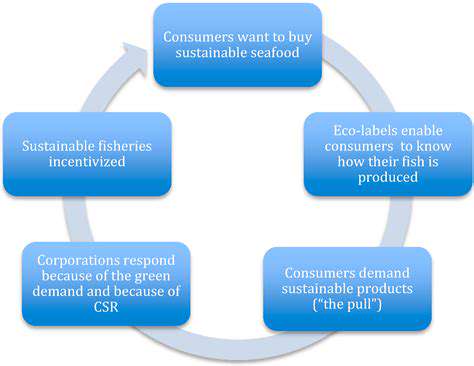The Problem with Microplastic Pollution from Clothes
The Ubiquitous Presence of Microplastics
Microplastics, tiny fragments of plastic less than 5 millimeters in size, are pervasive in our environment. They're found in the air we breathe, the water we drink, and even the food we eat. This widespread contamination stems from the vast amount of plastic produced and used globally, from single-use items to industrial processes. Their minuscule size makes them extremely difficult to detect and remove, posing a significant challenge to environmental remediation efforts.
Sources of Microplastic Pollution
The origins of microplastic pollution are multifaceted. Industrial processes, such as the manufacturing of textiles and paints, release microplastics directly into the environment. Furthermore, the breakdown of larger plastic items, like discarded bags and bottles, through weathering and degradation contributes significantly to the microplastic load. Washing synthetic fabrics, and even the wear and tear of tires, are additional significant sources.
The Impact on Marine Ecosystems
Marine life is particularly vulnerable to microplastic contamination. Marine animals often mistake microplastics for food, leading to ingestion and internal accumulation. This can disrupt their digestive systems, cause blockages, and lead to the accumulation of harmful chemicals absorbed by the plastic. The cascading effects on marine food webs are a significant concern for the health of entire ecosystems.
The Perils of Ingestion and Bioaccumulation
The ingestion of microplastics by marine organisms has far-reaching consequences. These tiny particles can act as vectors for harmful pollutants, transferring them up the food chain. This bioaccumulation of toxins can have devastating impacts on the health of top predators, including fish and marine mammals. Understanding these pathways is crucial for developing effective mitigation strategies.
Addressing the Contamination Challenges
Tackling microplastic pollution requires a multifaceted approach. Improved waste management practices are essential, focusing on reducing plastic consumption and promoting recycling initiatives. Furthermore, research into biodegradable plastics and alternative materials is crucial to minimizing the creation of these persistent pollutants in the first place. Developing effective methods for removing microplastics from the environment is also a critical area of ongoing research.
The Role of Consumer Awareness
Consumer awareness plays a vital role in mitigating microplastic pollution. Making conscious choices about the products we use, opting for reusable alternatives, and supporting companies committed to sustainable practices can all contribute to reducing the environmental impact of plastic. Educating ourselves and others about the pervasiveness of microplastics and their impact is critical in promoting responsible consumption and environmental stewardship.
International Cooperation and Policy Solutions
Addressing the global issue of microplastic contamination requires international cooperation and policy solutions. Governments worldwide need to implement stricter regulations on plastic production and disposal. Collaborative research efforts and the sharing of best practices are essential to develop effective strategies for reducing microplastic pollution at all scales. International agreements and coordinated efforts can create a powerful response to this global challenge.
Beyond the Laundry: Beyond the Clothesline

Beyond the Laundry Basket
Often, the overwhelming feeling of clutter isn't just about the physical items scattered around; it's a reflection of a deeper issue—a feeling of being overwhelmed and unable to manage the demands of daily life. This overwhelming feeling can manifest in various ways, from feeling stressed and anxious to feeling disconnected from your own well-being. Addressing this underlying sense of overwhelm is crucial in effectively tackling the clutter, as it's often the root cause of the accumulation.
It's tempting to focus solely on the visible clutter, the overflowing laundry basket or the piles of papers. However, often, the real work lies in identifying and confronting the emotional and mental factors contributing to the accumulation. Understanding these factors can be the key to long-term organization and a more peaceful home environment. This means examining your routines, responsibilities, and the underlying emotions that might be influencing your ability to manage your space efficiently.
Beyond the Clutter: Emotional and Mental Well-being
Clutter can be more than just an aesthetic problem; it can be a symptom of deeper emotional issues. Feeling overwhelmed, stressed, or anxious can lead to a sense of powerlessness, making it difficult to tackle the mess. Organizing your physical space can actually be a powerful tool for improving your mental well-being. By taking steps to declutter, you're not just tidying up; you're also creating space for a healthier, more balanced mindset.
This process of decluttering can foster a sense of control and accomplishment, which can be empowering and contribute to a greater sense of well-being. It's a chance to evaluate your priorities and create space for things that truly matter. This process can be particularly impactful when combined with other self-care practices, such as mindfulness or meditation, which can further support the journey towards a more organized and harmonious life.
Beyond the Clutter: Time Management and Prioritization
Another critical aspect to consider when tackling clutter beyond the physical items is the management of your time. An overwhelming schedule and lack of prioritization can easily lead to the accumulation of tasks and possessions. By identifying and prioritizing tasks, you create a clearer path for managing your responsibilities and reducing the likelihood of feeling overwhelmed. This strategic approach to time management can free up mental space and allow for more focused efforts in decluttering and organizing.
Effective time management is not just about scheduling; it's about understanding what truly needs your attention. Learn to say no to tasks that don't align with your priorities, and focus on completing tasks efficiently. This focused approach will allow you to allocate time for both physical decluttering and the mental processes that are crucial for long-term success. This approach to managing your time can be just as important as decluttering itself.
Solutions and Future Directions: A Call for Change

Innovative Strategies for Enhanced Efficiency
Streamlining processes and optimizing resource allocation are crucial for achieving sustainable growth in today's dynamic market. Innovative strategies must be adaptable to changing conditions and technological advancements. This necessitates a proactive approach to identifying and addressing potential bottlenecks in existing workflows, leading to improved operational efficiency and reduced costs. A key component of this involves fostering a culture of continuous improvement, empowering employees to identify and suggest solutions to everyday challenges. This commitment to innovation transcends departmental boundaries, fostering collaboration and knowledge sharing across the organization.
A comprehensive review of current systems and procedures is essential. This includes analyzing data on resource consumption, identifying areas where automation can be implemented, and assessing the effectiveness of current communication channels. Implementing new technologies, such as AI-powered tools and data analytics platforms, can significantly enhance decision-making and improve overall efficiency. Furthermore, a focus on employee training and development is vital, equipping staff with the skills necessary to effectively utilize these new tools and processes.
Exploring Emerging Technologies for Enhanced Productivity
The integration of emerging technologies, such as artificial intelligence (AI) and machine learning (ML), offers unprecedented opportunities to enhance productivity and accuracy across various sectors. These technologies can automate repetitive tasks, allowing human resources to focus on higher-level strategic initiatives and creative problem-solving. The potential for improved accuracy and reduced errors is significant, leading to cost savings and enhanced customer satisfaction. By leveraging the power of AI and ML, organizations can optimize processes, improve decision-making, and gain valuable insights from data.
Furthermore, the adoption of cloud computing platforms provides significant scalability and flexibility, allowing organizations to adapt to fluctuating demands and rapidly deploy new solutions. Cloud-based solutions also offer enhanced security and data management capabilities, which are critical in today's increasingly digital landscape. This adaptability and security are critical for organizations to compete effectively in the modern economy.
Addressing Challenges and Mitigating Risks
Implementing new solutions and strategies inherently presents challenges and potential risks. A comprehensive risk assessment is crucial to anticipate and mitigate potential issues, ensuring a smooth transition and maximizing the benefits of the new initiatives. This involves evaluating potential disruptions to existing systems, identifying vulnerabilities, and developing contingency plans. Thorough planning and meticulous execution are essential to overcome these challenges successfully.
Effective communication and stakeholder engagement are essential throughout the entire process. Open communication channels allow for transparency and the swift resolution of concerns. This ensures that all stakeholders are informed and involved, fostering a sense of shared responsibility and ownership in the success of the new initiatives. Furthermore, a well-defined change management strategy is crucial to ensure a smooth transition for all employees and stakeholders, minimizing disruptions and maximizing acceptance of the new processes.
Forecasting Future Trends and Adapting Strategies
The business landscape is constantly evolving, and organizations must adapt their strategies to remain competitive. Proactive forecasting of future trends, such as evolving customer demands, technological advancements, and shifts in market dynamics, is crucial for long-term success. This requires an ongoing assessment of market trends and a commitment to continuous learning and adaptation. Staying ahead of the curve ensures that organizations are well-positioned to seize opportunities and address challenges as they arise.
Adaptability is key to navigating the complexities of the future. Organizations must be prepared to adjust their strategies and operations in response to emerging trends. A flexible and forward-thinking approach will enable companies to remain competitive and thrive in the face of change. This includes cultivating a culture of innovation and continuous improvement within the organization, fostering a dynamic environment where new ideas are welcomed and implemented effectively.


